FLASHBACK: Moto-Ski Bullet 800 – A Very Fertile Flop
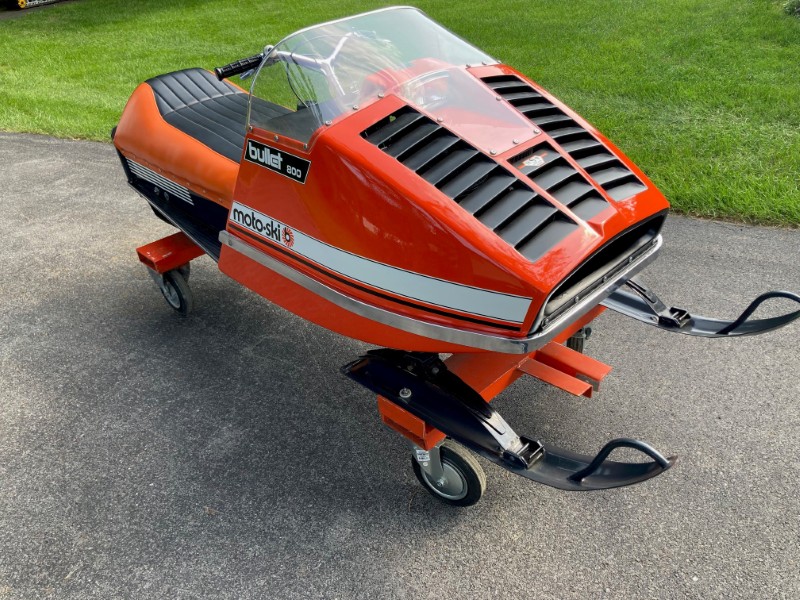
By 1970, oval sprint racing had become the major product development and promotional activity for most leading snowmobile manufacturers, so in turn it became very competitive and important.
Moto-Ski was a top-five brand that had recently been sold by its founders to the Florida-based Giffen Industries Recreational group, an industrial conglomerate that knew nothing about our winter sport.
Moto-Ski management wanted to leap ahead of competitors with a state-of-the-art modified racer for the 1970-71 season, so Chief Engineer John Bellanger began an ambitious program that resulted in the Bullet, the most fertile flop in the history of the sport because it led to really good later models for two brands.
(Editor’s Note: This article first appeared in the December 2023 issue of Snow Goer magazine)
Something Very Different
The objective was to build the smallest, lowest, lightest and most powerful race sled possible.
Drawing inspiration from Arctic Cat and Roll-O-Flex sleds, Bellanger discarded Moto-Ski’s conventional steel chassis with mid-mount engine, chain case-mounted driven clutch, stirrups and bogie wheels in favor of a totally new short, wide, all-aluminum chassis with the engine up front, jack shaft drive, short skis and slide rails with an 18-inch track. There were no stirrups.
The Canadian-built race sleds were so low to the ground that they came without the required end-of-tunnel snow flap, forcing each owner to add a flap that was custom-fitted for the rider’s weight.
Power came from the new Kebec Moto-Ski (KMS) free air series of two singles (295 & 340) and two twins (650 & 800), designed by engineer/racer Charlie Beattie. The engines featured generous porting in unusual round jugs and heads for increased cooling that was also more evenly distributed.
An equally new Bouchard Special Engine (BSE) 440 engine, essentially a modified free air CCW, covered the one racing class without KBC power. All would be built under Charlie Beattie’s direct supervision at the Kyoritsu Noki (Kioritz) plant in Japan.
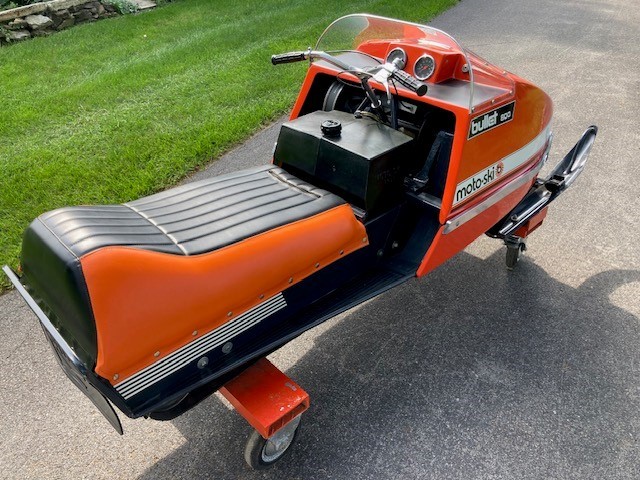
Trouble With A Capital T
“Design was state of the art, but the rush to meet deadlines caused serious issues,” Moto-Ski expert Bill Monette shared with us. Converting measurements from Canadian specs to Japanese Industrial Standard (JIS) dimensions plus language barriers and materials issues resulted in quality control problems with the KMS engines.
Beattie’s early return to Canada didn’t help either. Sluggish delivery and lack of spares made things worse. To ensure that Moto-Ski built the required class minimums of 150 sleds, the Hirth Red Baron 649 free air twin and Hirth Honker 793 free air triple were added as options. Several clutches were tried, but none were satisfactory. Plus a hydrostatic (fluid) drive 650 variant wouldn’t shift properly in cold weather.
“The Bullet should have been shelved until the next year,” Monette said, “but parent company Giffen pushed to race anyway.”
Often shipped incomplete and thrown onto the track with no testing, the low, sleek Bullets were disasters. Chassis bulkheads and the two-piece skid frame rails needed rework. The chassis had excessive internal friction, and narrower tracks would have helped.
Under the hood, the KMS 295, 340 and 650 engines were prone to seizures and crank twisting. The stock Keihin carbs were often replaced with more familiar Tillotsons. Plus, the tuned pipes needed more development. Plus, Moto-Ski suffered from the drive belt life problems that were affecting all brands at the time.
But there were actually signs of greatness on the rare occasions when a Bullet actually worked as intended. A youthful Gilles Villeneuve began the 1971 race season as an unknown Moto-Ski factory rider. He extensively modified his KMS 650 Bullet and “won some big races in Canada,” according to Monette’s information from John Bellanger’s son.
But Villeneuve could not race in the U.S. because he was too young. Worse, with the Bullet’s overall dismal performance, Moto-Ski’s new owner Bombardier (as of February, 1971) simply dissolved the factory team. Villeneuve jumped to Skiroule, where he ignited his rise to fame and eventually the Ferrari Formula One auto racing team. He would later return to promote Moto-Ski performance sleds.
Foretelling The Future
The Bullet missed the target. Moto-Ski’s massive technological leap was one of racing’s biggest all-time flops. But that’s actually a bad rap for the sled that was a victim of Giffen incompetence and Bombardier hubris. The Bullet actually taught Moto-Ski and Bombardier a great deal about advanced snowmobile engineering that bore sweet fruit in future products.
The Bullet’s sleek styling began to influence Moto-Ski consumer products for 1972, especially the Grand Prix models. But the real breakthrough was the all-new S (for Sport) and F (for Family) models introduced in 1973.
Using fully contemporary engineering and styling learned from building the Bullet, these new state-of-the-art trail sleds were way ahead of anything else that Moto-Ski or Ski-Doo offered consumers for model year 1973.
In 1974, Bombardier introduced the new 1975 RV 245 Ski-Doo and RV 340 Moto-Ski Sonic. They were conceptual descendants of the Bullet, with input from Charlie Beattie, who had stayed with Bombardier. These models put the company back in the winner’s circle for oval racing. Unlike previous long, thin Bombardier race sleds, the short, low and wide RVs won consistently in the Stock classes and went on to become really fun performance trail sleds.
The Ski-Doo RV also become a big winner in cross-country racing, making the legacy of the Bullet even more impressive.
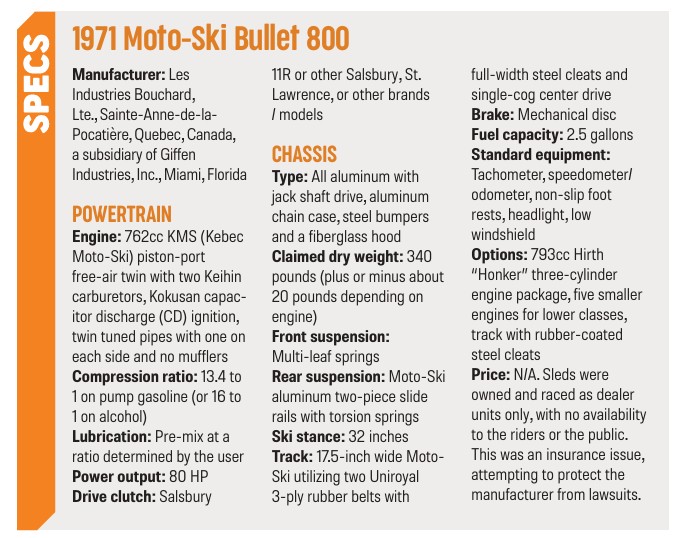
Editor’s Note: Every Snow Goer issue includes in-depth sled reports and comparisons, aftermarket gear and accessories reviews, riding destination articles, do-it-yourself repair information, snowmobile technology and more. Subscribe to Snow Goer now to receive print and/or digital issues.

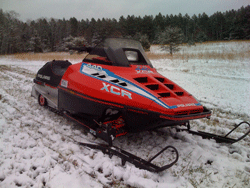
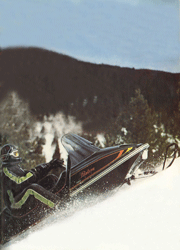
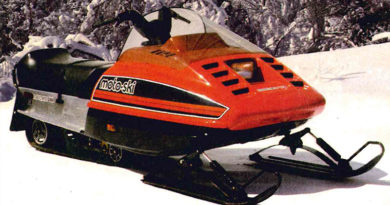
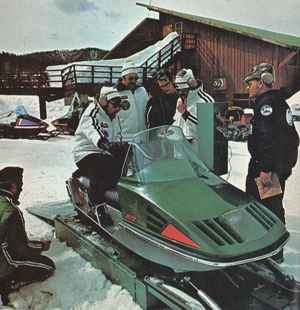
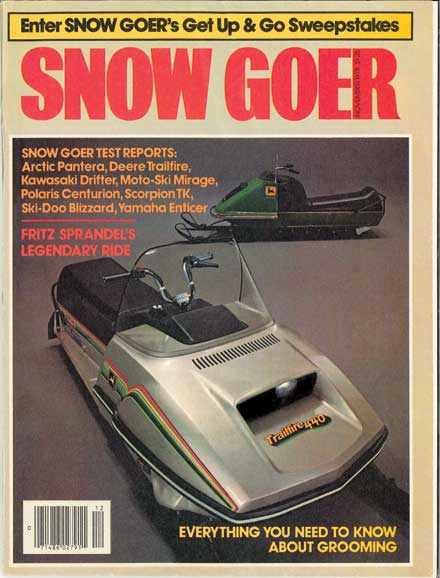
Love seeing and hearing and reading about the old sleds I’m 64 so that was right up my alley back there in the 70s great article
I actually own and ride moto- ski sleds that have been in the family from new, a1973 Capri 340 and 1972 Futura. That my late uncle used to grass race. Still rolling after all these years.
We both had 2 moto ski 1 was a Hirtch engine capri and the other one was a Zephir with a JLO engine they both had problem to start but was fun then
I’m 58 …been snowmobiling since I was eight and my first ride was my dad’s ’73 Motoski F 440. Thank you SG for this great article on a historical sled. Of all the articles I’ve read.. never saw this. BTW… still have the ’73 and even snow suits to match!
I had a buddy who had a Moto Ski Zephyr 340 long track. It was powered by a German Hirth! Actually not a bad machine for year 1973 !
Moto Ski certainly would have been better off waiting a year to produce this new sled . A 15 inch track with good clutching, sticking with their tried and true Hirth motors would have been for a better showing. The Bullet was a great sled but needed more time for development. We were all disappointed at the lack of performance.
Had an early 340. Had bogies.not fast but built to work.lots of ice fishing on thank in
Moto Ski was a good brand before and after Ski-Doo bought it.
Yes the RVs and Sonics that followed were very nice looking sleds.